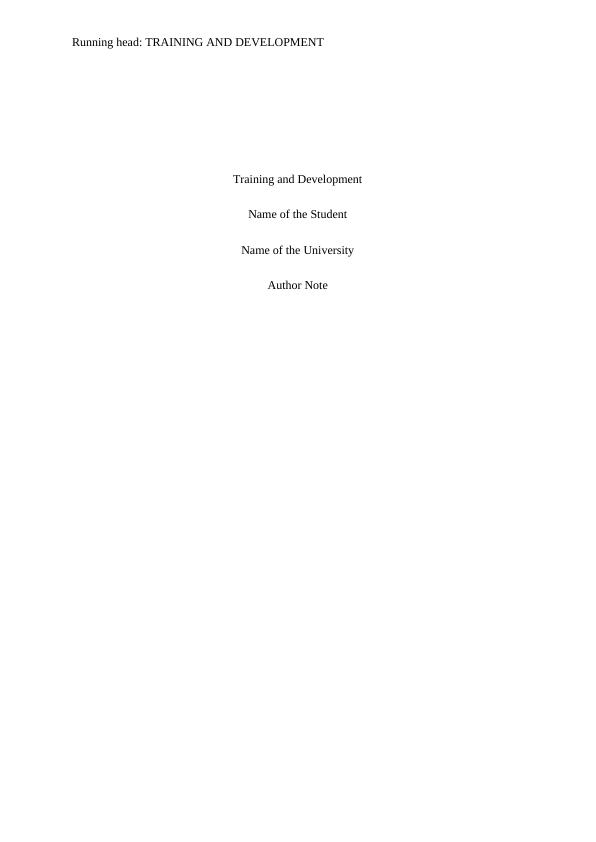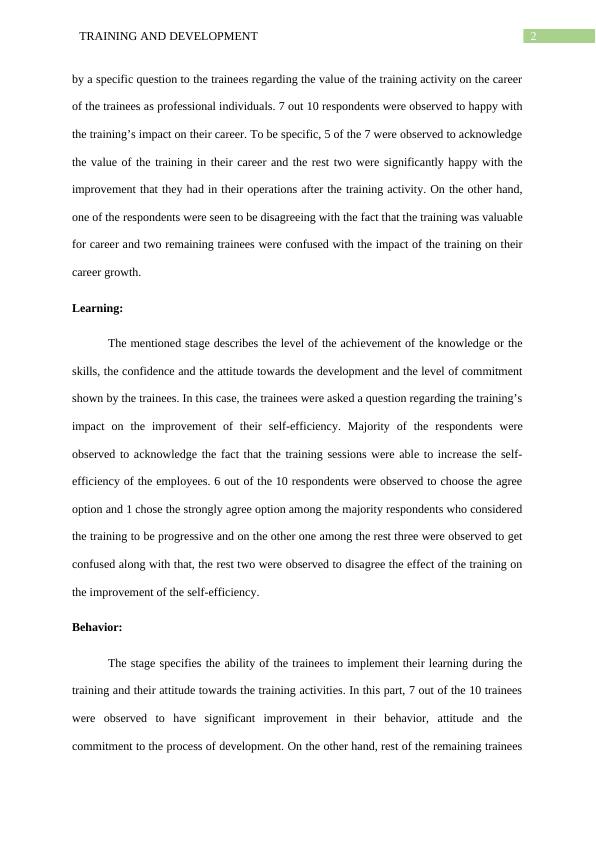Training and Development: Evaluation
Deliver a 10-minute presentation to the executive team of People's Credit Union on the training module designed, including PowerPoint slides and written notes.
Added on 2023-05-28
About This Document
This article discusses the evaluation of a training and development program using Kirkpatrick's model. The article covers the four levels of evaluation, namely Reaction, Learning, Behavior, and Results. The article also highlights the barriers faced during the evaluation and the outcomes achieved. The article provides insights on productivity and quality improvement.
Training and Development: Evaluation
Deliver a 10-minute presentation to the executive team of People's Credit Union on the training module designed, including PowerPoint slides and written notes.
Added on 2023-05-28
End of preview
Want to access all the pages? Upload your documents or become a member.



